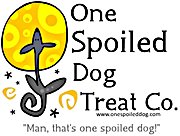As pet parents, we often find joy in giving our furry friends treats, whether as rewards for good behavior or as an expression of love. However, the calories in those small bites can add up quickly and impact your dog’s overall health and weight. Understanding caloric intake in dog treats is crucial for maintaining a balanced diet and ensuring your dog’s long-term health.
Why Caloric Intake Matters
Calories are the units of energy your dog needs to maintain bodily functions and fuel activities. A dog’s daily caloric requirement depends on factors such as age, size, breed, activity level, and health.
Excessive caloric intake leads to weight gain, which can result in obesity—a condition that affects nearly 50% of dogs in the U.S.. Obesity increases the risk of:
- Diabetes
- Joint problems
- Heart disease
- Reduced lifespan
While treats are small, they can contribute significantly to your dog’s daily calorie intake. Over time, overfeeding treats can negate the benefits of an otherwise balanced diet.
How to Calculate Your Dog’s Caloric Needs
To determine your dog’s caloric needs, start with their Resting Energy Requirement (RER):
RER=70×(body weight in kg)0.75RER = 70 \times (body\ weight\ in\ kg)^{0.75}RER=70×(body weight in kg)0.75
For example, a 10 kg (22-pound) dog has an RER of approximately 400 calories per day.
Adjust this number based on activity level:
- Sedentary dogs: Multiply by 1.2
- Active dogs: Multiply by 1.6
- Working dogs: Multiply by 2.0
Your veterinarian can help you refine these calculations for your dog’s specific needs. Once you know their total caloric requirement, treats should make up no more than 10% of their daily intake.
For instance, if your dog requires 500 calories per day, their treats should not exceed 50 calories.
Sneaky Sources of Calories in Dog Treats
Many commercial dog treats are surprisingly calorie-dense. Consider these examples:
- A single biscuit can contain 50–100 calories, equaling 10-20% of a small dog’s daily needs.
- Chewy dental treats, while beneficial for oral health, often have 60–80 calories per piece.
- Even “healthy” treats like freeze-dried liver can pack significant calories in small servings.
Homemade treats also require caution. Ingredients like peanut butter, cheese, or oats are calorie-rich, so portion control is critical.
How to Choose Low-Calorie Treats
Selecting the right treats can help manage your dog’s caloric intake while keeping them motivated and satisfied.
-
Read the Labels
Check the calorie content per treat. Brands that prioritize transparency will clearly list this information. -
Opt for Single-Ingredient Treats
Choose freeze-dried meats, dehydrated fish, or plain vegetables (e.g., sweet potato, carrot) with no added fillers or preservatives. -
Choose Small Portions
Look for treats that are naturally small or easy to break into smaller pieces. These are ideal for training sessions or frequent rewards. -
DIY Healthy Snacks
Low-calorie, homemade options include:
- Carrot sticks
- Apple slices (seedless)
- Blueberries
Balancing Treats with Meals
If you’re giving treats throughout the day, adjust your dog’s meal portions to prevent overfeeding.
- Example: If you give your dog a treat worth 30 calories, reduce their meal by the same amount.
- Break treats into smaller pieces to use for training or rewards without exceeding caloric limits.
Signs Your Dog Is Consuming Too Many Calories
Be mindful of these signs that may indicate overfeeding:
- Weight gain: Gradual or sudden increases in weight.
- Lethargy: Overweight dogs may have less energy or show disinterest in activities.
- Difficulty moving: Obesity can strain joints and muscles, affecting mobility.
- Digestive issues: Overfeeding can lead to irregular bowel movements or upset stomachs.
If you notice these signs, consult your veterinarian to assess your dog’s weight and adjust their diet as needed.
Healthy Habits for Treat Giving
To keep your dog’s caloric intake in check:
-
Track Daily Intake
Monitor how many treats you give and subtract the equivalent calories from meals. -
Use Treats for Training
Reserve treats for specific purposes like training or reinforcing good behavior. Avoid giving treats as frequent snacks. -
Weigh Your Dog Regularly
Regular weigh-ins can help you identify changes in your dog’s weight early and adjust their diet accordingly. -
Limit Table Scraps
Avoid giving table scraps, which are often calorie-heavy and nutritionally unbalanced. Stick to dog-specific treats or healthy, dog-safe foods.
Conclusion
Caloric intake from dog treats is an often-overlooked factor in maintaining your pet’s health. While treats are a valuable tool for training and bonding, they should be given in moderation and balanced with your dog’s regular meals.
By selecting low-calorie, nutritious options and monitoring your dog’s overall intake, you can enjoy the benefits of treat-giving without compromising their health. Remember, a healthy dog is a happy dog, and your mindful choices will ensure they enjoy a long, active, and fulfilling life.

